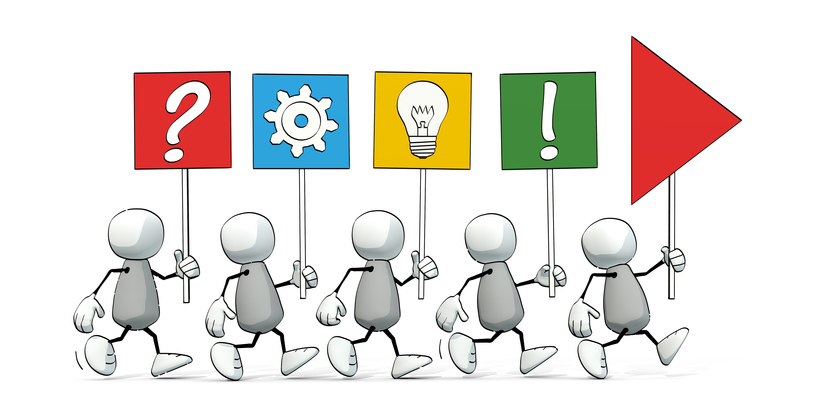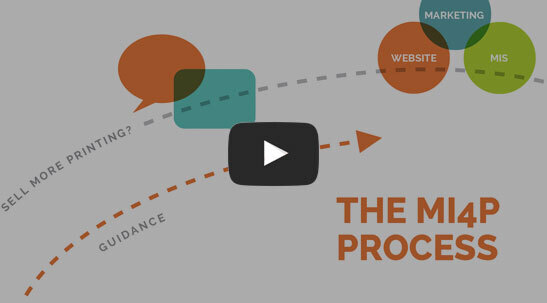5 Tips for an Effective Print Website Home Page

Having a great website starts with your home page.
Just as a magazine or postcard gives you only a few seconds to capture the attention of your audience, the same is true of your digital doorstep.
”Your website is likely the first impression a potential customer will receive about your company. It’s almost like a first date. The customer simply needs to know that you have something they want and you can be trusted to deliver whatever that is.” – Donald Miller
So, what can you do to ensure you grab and keep your print buyers’ eyes on you? Get started with these tips for a home page that is impossible to ignore.
5 Tips for an Effective Print Website Home Page
1. Stand out from your competition.
Whether you create a website from scratch or you use a customizable website design template, your goal should be to make your website as unique to you as possible.
Most of this uniqueness will come through your copywriting and images, not necessarily from your overall look. Here are a few things to keep in mind to ensure your copy is on-point:
- Skip the printer jargon and focus on using the same words your print buyers would use (or the words they would use to search for your products and services)
- Make your website visitor the hero of your text. In other words, get rid of “we” and use more “you.” Make it about them.
- Eliminate the fluff. Keep your copy focused with action words that will resonate with your buyers.
Consider interviewing your print buyer to better understand their pain point and how you can adjust your copy to meet that need.
2. Keep it simple.
Complicated web pages lead to confused print buyers, which equals fewer print sales.
Just as in print, you don’t need to fill every nook and cranny of the page with content. Rather, start thinking along the lines of Picasso when he said, “Art is the elimination of the unnecessary.” What is unnecessary on your home page? Remember, your home page is your prime real estate, so keep the most important and move the rest to your site’s internal pages.
Here are three key essentials your website’s home page should tell your visitor:
- Who you are. Be sure to include your logo, brand name and colors, and any other key elements in showcasing who you are as a brand.
- What you do. This is where your headlines and taglines come into play. Remember, people don’t read websites; they skim them, so always be clear and to the point.
- And why they should care. Talk about the benefits (not features) your visitors receive by working with you. If you struggle to pinpoint the difference between a feature and a benefit, keep this trick in mind: A feature can easily be converted into a benefit by asking yourself: so what?
3. Make the next steps clear.
A great website is a website that’s easy to navigate and has clear next steps or call-to-actions.
To see how clear the path is on your website, hop on over to your website and ask yourself this one question: What is the specific goal I want my print buyer to take?
If you can’t define a clear goal, or you have multiple options, you’ll want to take the time to make the path easier and more clear for your visitors. For example, do you want your print buyer to:
- Start an estimate
- Place an order
- Contact you (phone, email, fill out form)
- Sign up for your mailing list
- Send a file
- Start designing online
As a printer, since you offer such a large variety of products and services, you may require more than one call-to-action. If this is true in your case, try and make them look as different and distinct as possible. Unfortunately, when options are too similar, people tend to do nothing, so always make the main action you want them to take the most prominent.

4. Don’t overlook the power of great design.
Did you know that 94% of first impressions relate to your site’s web design? And that 75% of website credibility comes from design? (Source)
Good design doesn’t have to be complicated. If you keep it simple and follow some basic guidelines, such as the ones below, you’ll be golden.
- Replace generic-looking stock images with images of your actual team and print jobs you’ve produced for real customers. (Authenticity works!)
- Make sure your fonts are legible. Avoid scrolly, fancy fonts that appear cramped, and be sure your text has a high contrast, so it’s easily readable.
- Avoid anything that affects or worsens your print buyers’ overall experience on your website. (think annoying pop-ups, graphics that take too long to load, etc.)
For more great tips on website design, check out the blog: “Websites For Printers: 7 Best Practices for Website Design”
5. Establish trust.
An often-overlooked element of a great website home page is social proof.
In order for a potential print buyer to do business with you, they need to know they’re making the right decision by engaging with your brand. In other words, they need to be able to trust you.
By providing social proof on your website, you can easily build and reinforce the kind of honest and trusting relationships they’re looking for in a print partner.
You can provide social proof through things, such as:
- Quotes, Testimonials
- Statistics (such as number of customers or jobs completed)
- Reviews and ratings
- Awards
If you need additional help in this area, check out the Sell More Printing webinar episode: “Social Proof: The Power of Online Reviews and Testimonials.”
“… your website deserves the best;
after all, it is the internet advertising billboard for you and your company.”

